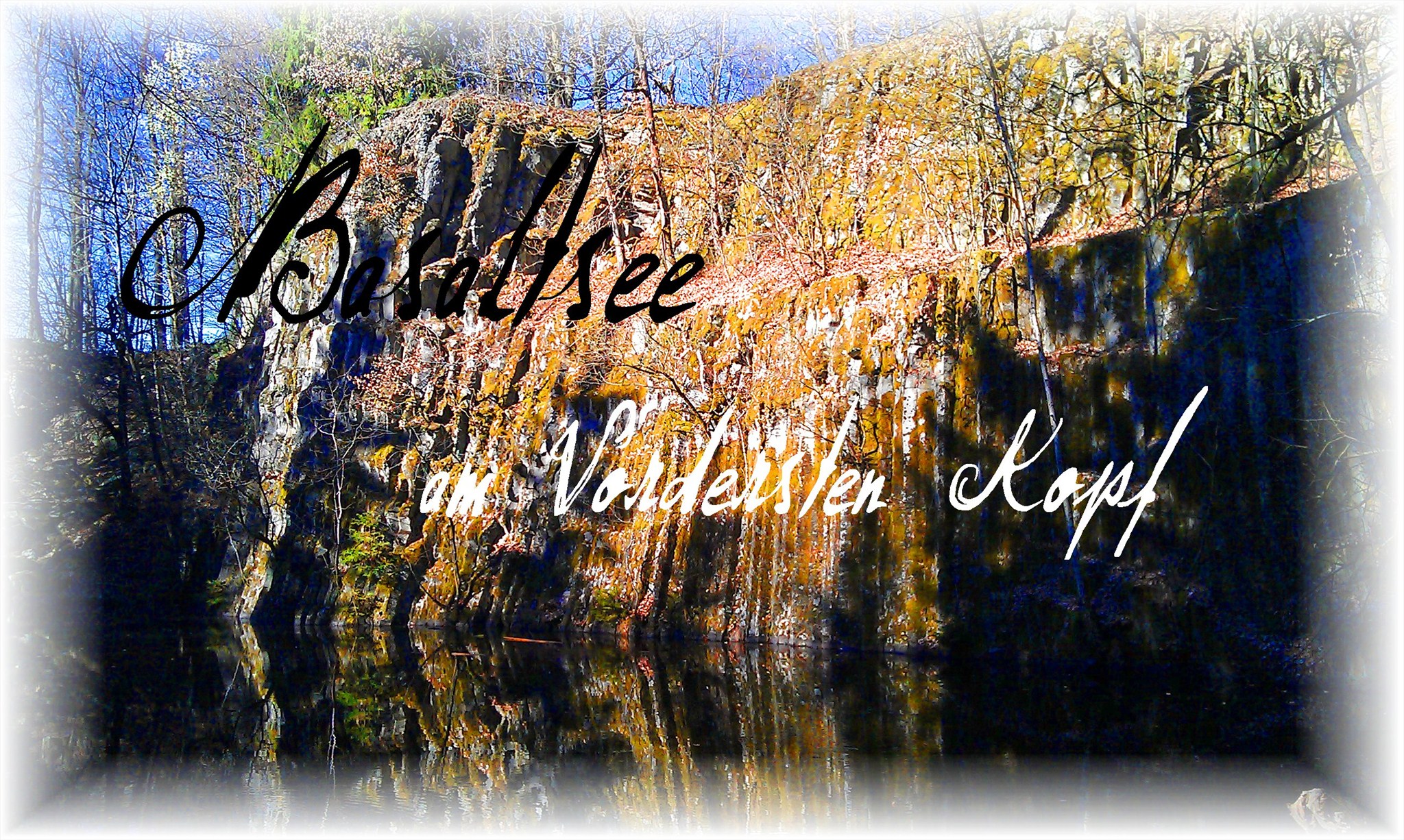

Parken kannst du an den angegebenen Parkkoordinaten. Wenn du den linken Weg nimmst, sind es etwa 700m zum Basaltsee. Du kannst diesen Earthcache mit dem Tradi "Blauer See" gut kombinieren. Nimm Dir genügend Zeit mit. Hier lohnt es sich, sich etwas länger mal aufzuhalten.
Geologisches Gebiet
Der Vorderste Kopf liegt im oberwesterwälder Hügelland und ist zugehörig zum rheinischen Schiefergebirge.
Geologisch besteht der Untergrund aus oberdevonischem Schiefer. Die Höhenrücken bestehen überwiegend aus Olivinbasalten. Diese Schichten besitzen ein Alter vor etwa 300 Millionen Jahren. Über dieser Schicht haben sich tertiäre Ablagerungen, vor allem während der Miozänzeit vor etwa 20 Millionen Jahren, gebildet. Diese bestehen im Wesentlichen aus Basalten und Tonen.
 Der Vorderste Kopf, ist neben dem Roten Kopf, dem Hintersten Kopf und dem Obersten und Untersten Saalweidenkopf, eine der "Gipfel" des Höhenrückens.
Der Vorderste Kopf, ist neben dem Roten Kopf, dem Hintersten Kopf und dem Obersten und Untersten Saalweidenkopf, eine der "Gipfel" des Höhenrückens.
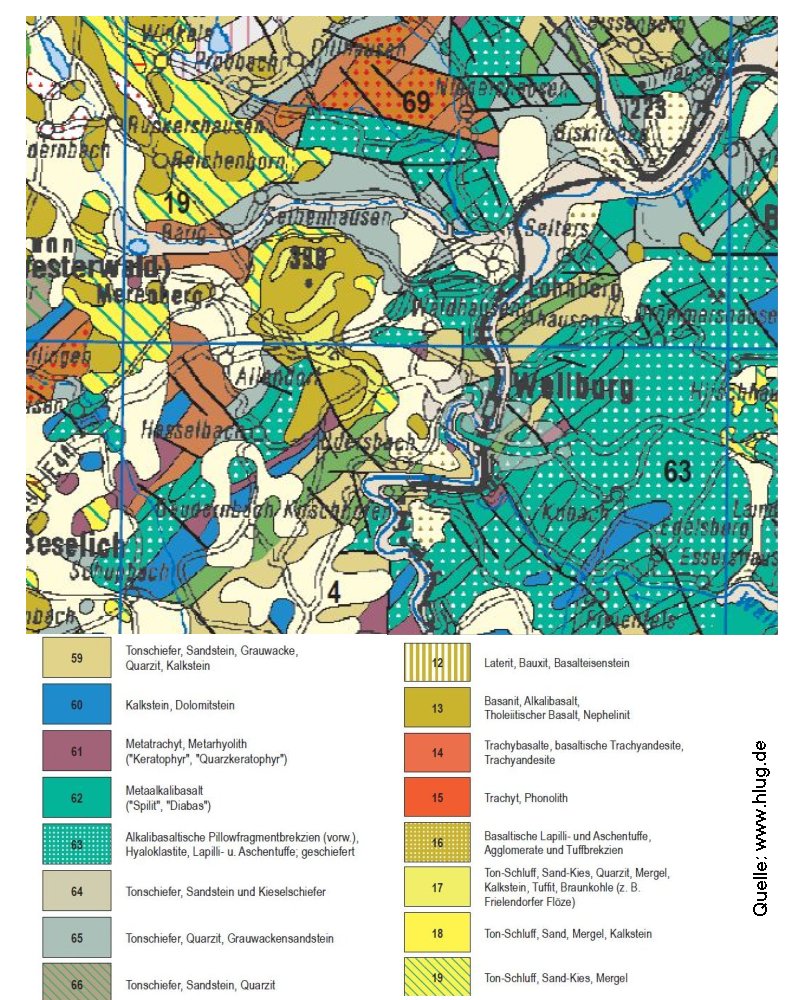
Entstehung von Basaltsäulen - Eine Frage, die die Gemüter bewegte!
An den angegebenen Koordinaten findest du ein besonders schönes Exemplar von einer Basaltwand mit sich sehr deutlich abzeichnenden Basaltsäulen. Um die Entstehung dieser Basaltsäulen gab anfang des 19.Jahrhunderts hitzige geologische Debatten, die die Geologen in zwei Lager spalteten. Die sogenannten "Vulkaniter" vertraten die Ansicht, dass Vulkane ebenso alt seien, wie die Erde selbst, und dass die Säulen aus erkalteter Lava bestünden. Die sogenannten "Neptuniter" dagegen waren der festen Überzeugung, dass Vulkanismus ein relativ junges Phänomen sei, und da die Basaltsäulen alt seien, müssten sie aus Mineralkristallen des Wassers entstanden sein. Heute sind sich die Gelehrten einig, dass Basaltsäulen vulkanischen Ursprungs sind.
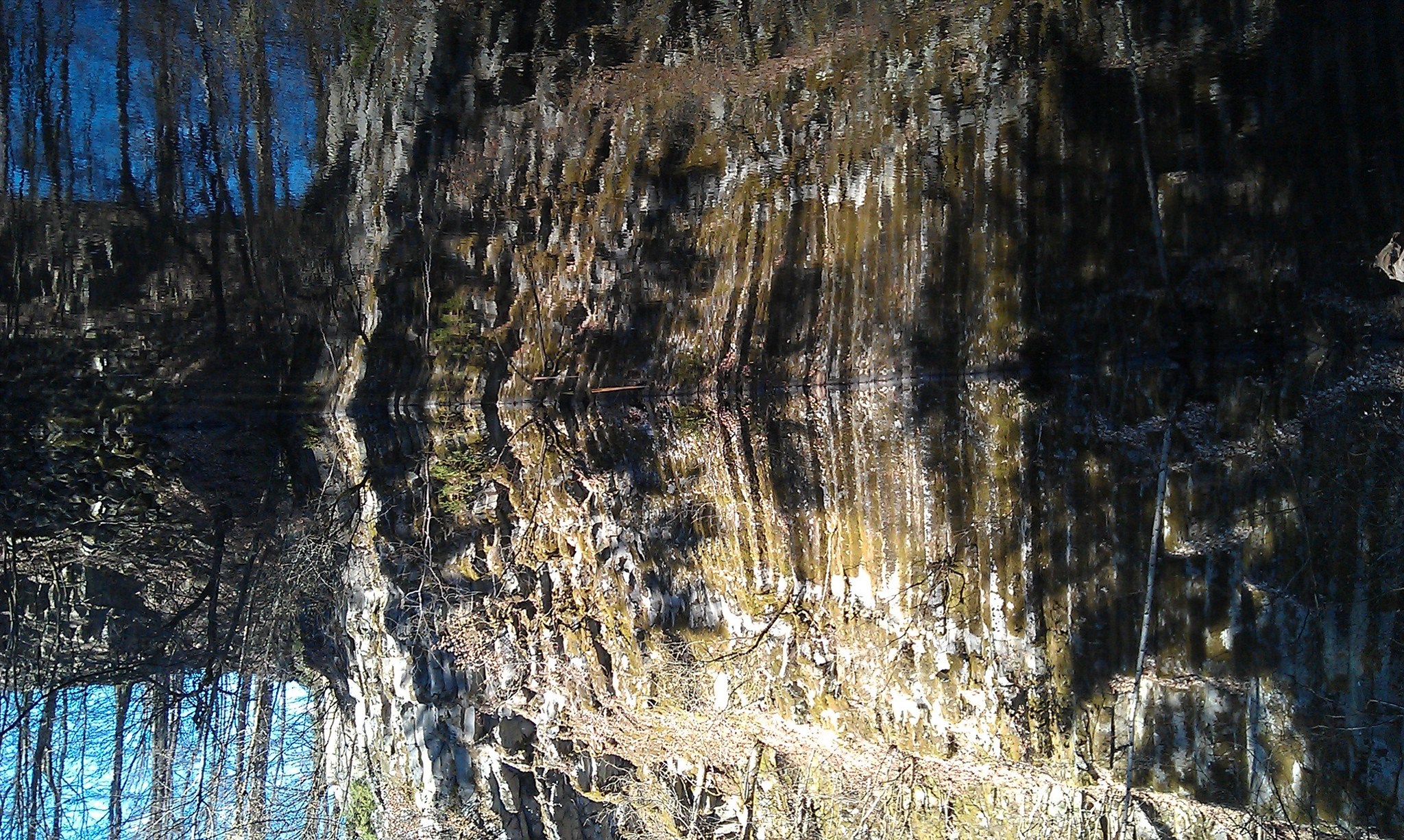
Was ist Basalt?
Basalte sind vulkanische Gesteine. Sie sind meist dunkel oder schwarz und bestehen überwiegend aus Feldspat und dunklen Mineralen. Wegen ihres Reichtums an Mineralen, die Eisen und Magnesium enthalten, bezeichnet man Gesteine aus der Basaltfamilie auch als "mafische Gesteine" oder auch als "basisch" (bezogen auf den geringen Quarzgehalt).
Basalt entsteht, wenn dünnflüssiges, kieselsäurearmes Magma an der Erdoberfläche austritt und relativ schnell zu Basaltlava erkaltet.
Was ist Olivin?
Bei dem hier zu sehenden Basalt handelt es sich um Olivinbasalt. Olivin ist eine Sammelbezeichnung für Minerale aus der Mineralklasse der Silikate. Olivine haben eine Härte zwischen 6,5 und 7, eine im reinen Zustand gelbgrüne, sonst auch gelbbraune bis schwarze Farbe und weiße Strichfarbe. Die Kristalle sind meist prismatisch oder tafelig.
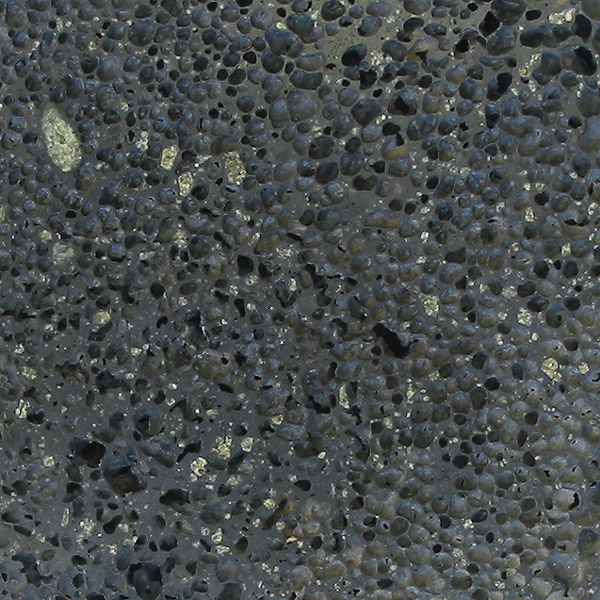
Quelle: wikipedia
Olivine sind die häufigsten Silikate und gesteinsbildende Minerale. Sie bilden den Hauptbestandteil des oberen Erdmantels, wo die Magnesium- und Eisenanteile des Olivin etwa im Verhältnis 9:1 stehen, und entstehen in magmatischen Gesteinen wie Gabbro und Peridotit, aber auch in Basalt , wie hier zu sehen ist.
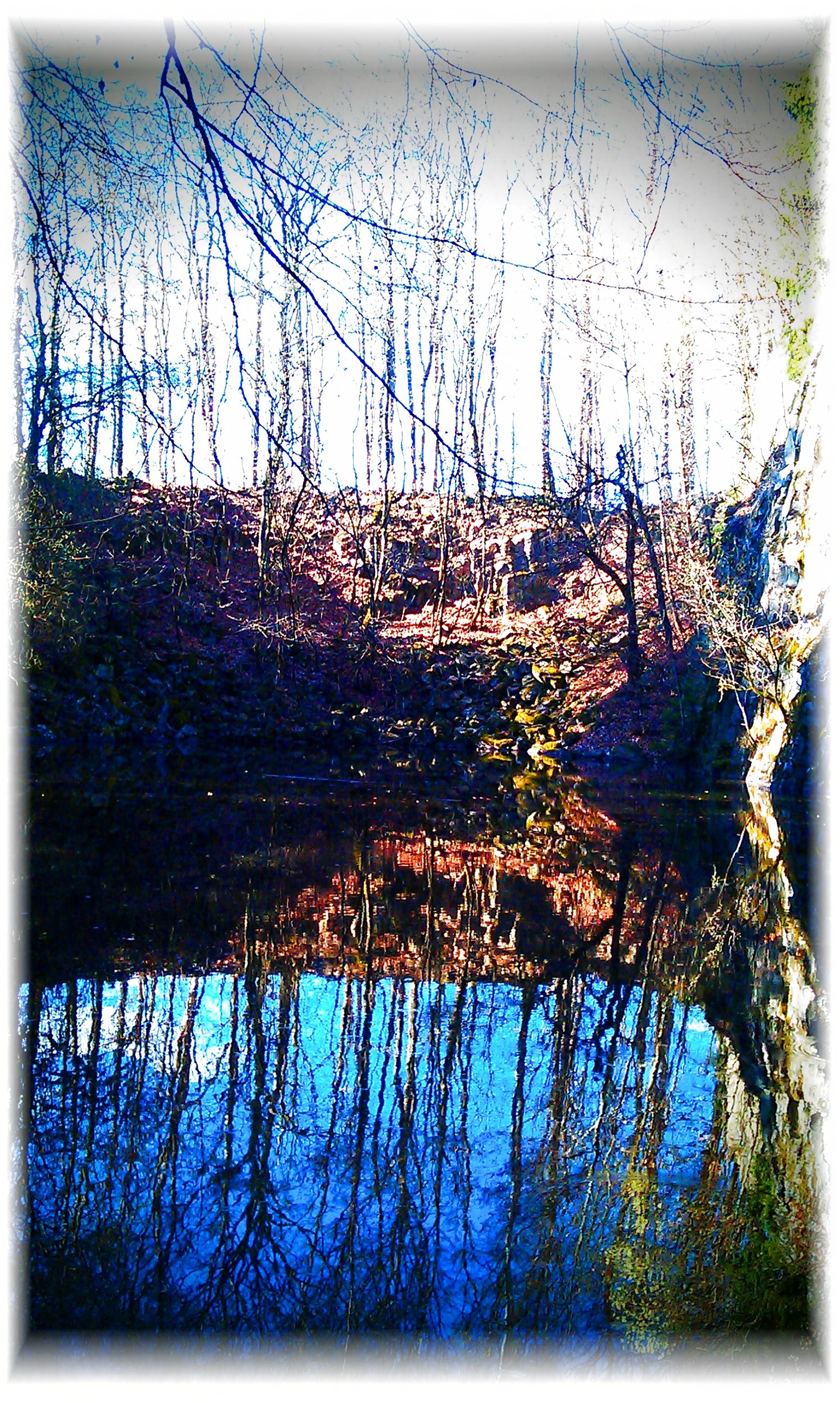
Um diesen Earthcache zu loggen:
Schicke bitte eine Mail an meinen Account mit den Antworten zu folgenden Aufgaben.
1.Zähle die Basaltsäulen der Felswand am anderen Ufer des Sees!
2.Was glaubst Du: Entstehen Basaltsäulen, wenn sich die Lava schnell oder langsam abkühlt? Begründe!
3.Auf welcher Höhe über NN befinden sich der See an den angegebenen Koordinaten?
4.Schätze die Höhe der Basaltsäulen bis zum ersten oberen Absatz
5.Nenne 2 andere bekannte Orte, bei denen Basaltsäulen vorkommen.
6.Es wäre schön, wenn du an den angegebenen Koordinaten ein Foto mit dir oder deinem GPS machen könntest und es hochlädst (optional!)
Du darfst den Cache nach Zusendung deiner Antworten loggen. Wenn es Probleme gibt, melde ich mich.

You can park your car at the specified coordinates. If you take the left path, there are approximately 700m to the lake. You can combine this cache with the Traditional "Blauer See". Take enough time.
Geological Area
The "Vorderster Kopf" is in the upper "Westerwälder" hills and belongs to the Rhenish Slate Mountains.
Geology of the subsoil upper devon slate. The ridges consist mainly of olivine basalts. These layers have an age about 300 million years ago. Above this layer have tertiary deposits, mainly formed during the Miocene some 20 million years ago. These consist mainly of basalts and clays.
 The" Vorderste Kopf", is beside the "Roten Kopf", the "Hintersten Kopf" and the "Obersten and Untersten Saalweidenkopf", one of the peaks of the ridge.
The" Vorderste Kopf", is beside the "Roten Kopf", the "Hintersten Kopf" and the "Obersten and Untersten Saalweidenkopf", one of the peaks of the ridge.

Origin of Basalt columns - One question that stirred the minds!
At the given coordinates you find a particularly fine example of a basalt wall with very clear signs of basalt columns. Of the origin of these basalt columns beginning of the 19th century geological heated debate that divided the geologists into two camps. The so-called "Vulcaniter" were of the view that volcanoes were as old as the earth itself, and that the columns were made of cooled off lava. The so-called "Neptuniter", were convinced that volcanism is a relatively recent phenomenon, as the old basalt columns were, they would have made of mineral crystals of water. Today, we agree that basalt columns are of volcanic origin.

What´s Basalt?
Basalts are volcanic rocks. They are usually dark or black and consist mainly of feldspar and dark minerals. Because of their wealth in minerals, iron and magnesium, called basaltic rocks from the family as "mafic rock" or as "basic" (based on the low quartz content).
Basalt is formed when low-viscosity, low-silica magma emerges at the surface and cools relatively quickly to basalt.
What is Olivin?
In the basalt you can see here, is olivine. Olivine is a collective term for minerals from the mineral class of silicates. Olivine has a hardness of 6.5 to 7, a yellow-green in the pure color, or even yellow-brown to black color and white color line. The crystals are usually prismatic or tabular.

Quelle: wikipedia
Olivine is the most common rock-forming minerals and silicates. They form the main part of the upper mantle, where the magnesium and iron contents of olivine are approximately in the ratio 9:1, and occur in igneous rocks such as gabbro and peridotite, but also in basalt, as seen here.

To log this Earthcache:
Please send me an e-mail to my account with the answers to the following tasks.
1.Count the number of basalt columns on the other side of the lake!
2.What do you think: emergence of basalt columns, when the lava cools quickly or slowly? Explain!
3.On what height above sea level, the lake is located at the specified coordinates?
4.Aproximate the height of the basalt columns up to the first level
5.Give two other known locations where basalt columns exists.
6.It would be nice if you could do at the specified coordinates a photo with you or your GPS and upload it(optional!)
You can log the cache after sending me your answers.If there are any problems I will write you.

